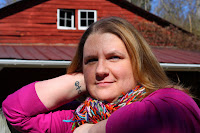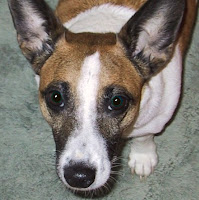Using "ball dropping" to signal the passage of time dates back long before New Year's Eve was ever celebrated in Times Square. The first "time-ball" was installed on top of England's Royal Observatory at Greenwich in 1833. This ball would drop at one o'clock every afternoon, allowing the captains of nearby ships to precisely set their chronometers (a vital navigational instrument).
 New Year's Eve has been celebrated in Times Square as early as 1904, but in 1907, the New Year's Eve Ball made its first descent from the flagpole atop One Times Square. The first ball was made of iron and wood, was adorned with one hundred 25-watt light bulbs, was 5 feet in diameter and weighed 700 pounds. It was built by a young immigrant metalworker named Jacob Starr, and for most of the twentieth century the company he founded, sign maker Artkraft Strauss, was responsible for lowering the ball.
New Year's Eve has been celebrated in Times Square as early as 1904, but in 1907, the New Year's Eve Ball made its first descent from the flagpole atop One Times Square. The first ball was made of iron and wood, was adorned with one hundred 25-watt light bulbs, was 5 feet in diameter and weighed 700 pounds. It was built by a young immigrant metalworker named Jacob Starr, and for most of the twentieth century the company he founded, sign maker Artkraft Strauss, was responsible for lowering the ball.
 New Year's Eve has been celebrated in Times Square as early as 1904, but in 1907, the New Year's Eve Ball made its first descent from the flagpole atop One Times Square. The first ball was made of iron and wood, was adorned with one hundred 25-watt light bulbs, was 5 feet in diameter and weighed 700 pounds. It was built by a young immigrant metalworker named Jacob Starr, and for most of the twentieth century the company he founded, sign maker Artkraft Strauss, was responsible for lowering the ball.
New Year's Eve has been celebrated in Times Square as early as 1904, but in 1907, the New Year's Eve Ball made its first descent from the flagpole atop One Times Square. The first ball was made of iron and wood, was adorned with one hundred 25-watt light bulbs, was 5 feet in diameter and weighed 700 pounds. It was built by a young immigrant metalworker named Jacob Starr, and for most of the twentieth century the company he founded, sign maker Artkraft Strauss, was responsible for lowering the ball.DESIGNS
- In 1920, a 400 pound ball made entirely of wrought iron replaced the original.
- In 1955, the iron ball was replaced with an aluminum ball weighing a mere 200 pounds.
- In the 1980's, red light bulbs and the addition of a green stem converted the Ball into an apple for the "I Love New York" marketing campaign from 1981 until 1988. After seven years, the traditional glowing white Ball with white light bulbs and without the green stem returned to brightly light the sky above Times Square.
- In 1995, the Ball was upgraded with aluminum skin, rhinestones, strobes, and computer controls, but the aluminum ball was lowered for the last time in 1998.
- For Times Square 2000, the millennium celebration at the Crossroads of the World, the New Year's Eve Ball was completely redesigned by Waterford Crystal. The new crystal Ball combined the latest in technology with the most traditional of materials, reminding us of our past as we gazed into the future and the beginning of a new millennium. It was six feet in diameter and weighed approximately 1,070 pounds. It was covered with a total of 504 Waterford crystal triangles that varied in size and ranged in length from 4.75 inches to 5.75 inches per side.
- In 2008, the co-organizers of New Year’s Eve in Times Square unveiled a new Times Square New Year’s Eve Ball at a press conference. The Ball is 12 feet in diameter and weighs 11,875 pounds. For 2011, Waterford Crystal has designed 288 new “Let There Be Love” crystal triangles featuring a romantic pattern that blends a modern cascade of hearts with diamond cutting. 288 triangles are emblazoned with last year's "Let There Be Courage" design of a ribbon medal defining the triumph of courage over adversity; and 1,152 triangles sparkle with the "Let There Be Joy" design of an angel with arms uplifted welcoming the New Year. The remaining 960 triangles are the original "Let There Be Light" design of a stylized radiating sunburst. The 2,688 crystal triangles are bolted to 672 LED modules which are attached to the aluminum frame of the Ball. The Ball is illuminated by 32,256 Philips Luxeon Rebel LEDs (light emitting diodes). Each LED module contains 48 Philips LEDs - 12 red, 12 blue, 12 green, and 12 white for a total of 8,064 of each color. By mixing these four colors, the Ball is capable of creating a palette of more than 16 million vibrant colors and billions of patterns producing a spectacular kaleidoscope effect atop One Times Square.








No comments:
Post a Comment